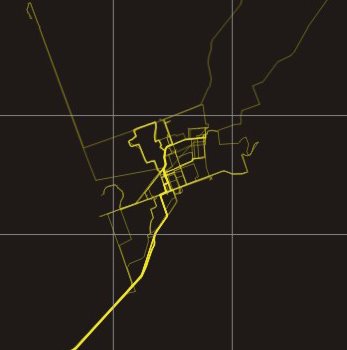





Looking at specific recreation guides for New England, such as one guide I have that details the recreation in Western Maine, I have noticed similarities in the way that recreation and space is represented. The theme of most recreation maps for New England centers around nature and the outdoors. Many of the recreation guides include activities such as kayaking, mountain climbing, hiking, sightseeing, etc. New England has is unique in that it has some of the most beautiful and lively landscapes in the country. For example, the fall foliage, cranberry bogs, and landscapes of New England are unique and cannot be found in other parts of the country.
The wealth of history of New England, going all the way from the Pilgrims landing in 1620, attracts many tourists from all over the country as well. Many of the sightseeing and museums are devoted to experiencing the history that was written in the area, such as covered bridges, which are extremely popular and mentioned in many recreation guides.
Overall, I think the “charm of New England” is the combination of the landscapes, history, and wealth of recreational activities available in the area.
Granville, MA is a community of 1,521 people whose main ancestry is Irish, English, Polish and German. However, a picture speaks a thousand words.
Granville, MA is a very small rural town with a couple of major arteries running through it. It definitely doesn't appear as successful as the Granville created in Ohio by its former residents. The Granville in Ohio appears to be doing very well and is easily 2 or 3 times larger than the one in Massachusetts. This community has over 3,000 citizens. Of these citizens, 22% are German, 18% English, and 16% Irish. This ancestry seems to have little correlation with the Granville in Massachusetts, which is slightly odd considering that the origins of the Granville in Ohio is comprised of citizens from the Granville in Massachusetts. The citizens of Granville Ohio are also more prosperous than those in Granville Massachusetts, with median household incomes of $67,000 in Iowa and $53,000 in Massachusetts.
The Granville in Ohio appears to be doing very well and is easily 2 or 3 times larger than the one in Massachusetts. This community has over 3,000 citizens. Of these citizens, 22% are German, 18% English, and 16% Irish. This ancestry seems to have little correlation with the Granville in Massachusetts, which is slightly odd considering that the origins of the Granville in Ohio is comprised of citizens from the Granville in Massachusetts. The citizens of Granville Ohio are also more prosperous than those in Granville Massachusetts, with median household incomes of $67,000 in Iowa and $53,000 in Massachusetts. The three communities do share some similarities; they are all relatively low population, are mostly rural, and are fairly isolated. Research into the history and formation of these three communities may prove fruitful and may uncover the reason why 2 communities with a history and 1 disparate community have the same name. Here is a good map showing the location of all three in the United States.
The three communities do share some similarities; they are all relatively low population, are mostly rural, and are fairly isolated. Research into the history and formation of these three communities may prove fruitful and may uncover the reason why 2 communities with a history and 1 disparate community have the same name. Here is a good map showing the location of all three in the United States.
However, mapping the news does not just have to be limited to the linear “showing the location of something” formula. Marcos Weskamp,
a design engineer specializing in information visuali
zation, has created a remarkable program to map the news.
It is best understood in his own words,
“Newsmap is an application that visually reflects the constantly changing landscape of the Google News news aggregator. A treemap visualization algorithm helps display the enormous amount of information gathered by the
aggregator. Treemaps are traditionally space-constrained visualizations of information. Newsmap's objective takes that goal a step further and provides a tool to divide information into quickly recognizable bands which, when presented together, reveal underlying patterns in news reporting across cultures and within news segments in constant change around the globe.”
Needless to say, this is an amazing piece of technology that is very interesting to use. The program runs in your browser and can be found at this url, http://newsmap.jp/
Give it a try! I spend quite a while looking at both national and international news and came across some very interesting articles.




I found the demographic information for New York City from 1940 to 2000. I thought it would be interesting to look at the black population centered around the Bronx. However, this brought me to my next problem. The plague of reduced features makes it virtually impossible to export maps as images, without some fancy Paint work that I would rather not do. Instead, I created links!
Bronx African American Population
As you can see from the maps above, there were very few African Americans in the Bronx in 1940. By 2000, there are two distinct areas of heighted population to the northeast and southwest.
After thinking for a bit about population mapping and criminal justice, it would make an interesting project to map how population increases affect crime rates with respect to both the raw population numbers as well as demographic data.
Overall, I think the website is a valuable source of information, especially when it can be exported to other programs. The map utility that they use to access their data is cumbersome and inefficient though. The controls are unresponsive and the map window is so short and wide that it is difficult to place the map in a position that provides any relevant information. Combine that with the wealth of inaccessable features on the free version and it is nearly impossible to do anything more meaningful than playing around.
Source: http://harvardmagazine.com/2007/01/mapping-music.html